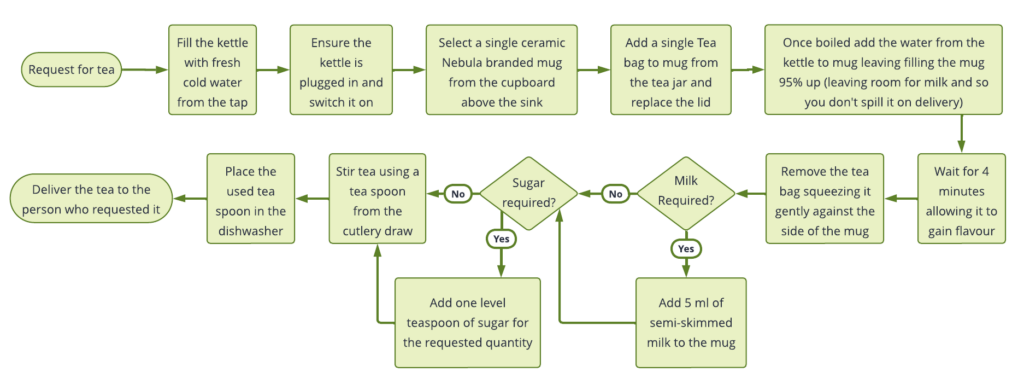Ever found yourself staring blankly at an AI agent, having typed what felt like a perfectly reasonable instruction, only to be met with a response that’s… well, not quite right? Perhaps it’s an email that misses the mark, an image that’s wildly off-kilter, or code that throws up more errors than it solves.
This experience is a familiar source of frustration for many venturing into the world of AI-powered tools. It’s enough to make you wonder if these assistants are quite as intelligent as they’re cracked up to be. However, maybe we need to adapt to a new way of working?
Speaking the language of toddlers
In business, we have become accustomed to using a particular language and turns of phrase that might resonate with our human colleagues. However, when you break it down, it becomes clear how confusing this can be not only for your AI colleagues but also for your co-workers whose native language is not English.
Anyone with children knows that when speaking to a toddler, you must adapt your language to ensure you achieve the desired outcome. Your language should be simple, you can’t have too many steps, and you should avoid metaphors and analogies. Otherwise, you will end up frustrated or wonder why they never returned, only to find them playing with LEGO in the other room.
Leaving No Room for Interpretation
Unlike human colleagues, who bring a wealth of contextual understanding and common-sense reasoning. Agentforce agents operate within the confines of your instructions. Therefore, you must approach the task of writing instructions with precision, ensuring that every step required to complete a task is explicitly outlined. Ambiguity, however slight, can lead to errors, hallucinations, and ultimately, failing to achieve the desired outcome.
Consider a seemingly straightforward task in a business context, such as generating a summary of customer feedback. A human might understand that this involves collating reviews from various sources, identifying key themes, and presenting a concise overview. However, an AI agent requires a far more granular level of instruction. You must specify the data sources to access, the criteria for identifying relevant feedback, the methods for categorising themes, the desired length and format of the summary, and any specific keywords or sentiment analysis parameters to apply. Without this level of detail, the agent’s output may be incomplete, inaccurate, or not align with your expectations.
The Tea Test
A helpful analogy to illustrate the necessity of explicit instructions is the simple act of making a cup of tea. When asked if you would like a drink in the office, “tea with milk, no sugar please” will usually result in a hot brew being delivered to your desk. However, those instructions to a child would result in a very different result (although I would not recommend asking a toddler to make a cup of tea for you).

What could go wrong, you may be thinking? Is the water hot? Has it been made in a mug? Did they add the milk? There are many assumptions that have been made in the process; this is where things go wrong.

By adding some additional instructions, we know we will get our tea delivered in a mug, and the kettle will be boiled. However, we still have not added the details needed, and the blanks must be filled in. Was the boiled water added to the mug? How much milk was added? Was it delivered to the correct person? These instructions may work the first time you do the task, but each time you ask an AI agent the same question, it will give you a slightly different result. This means we have still left too much open to interpretation.

Although it may feel like overkill, you must provide explicit, step-by-step guidance, leaving no room for ambiguity or assumption. Just as you cannot assume a child knows how much milk to add to your tea (I have once been delivered a cup with 50% milk), you cannot assume an AI agent understands implicit steps within a task. Stop and think about all those additional steps you do naturally without thinking. If you have never done the task before, what would get missed?
The Power of Positive Phrasing
Your AI agent will not throw a tantrum like a toddler will if they feel you are being too negative. However, how instructions are phrased plays a crucial role in the effectiveness of AI agents. You must adopt a positive and directive tone, focusing on the desired actions rather than what should be avoided. For example, instead of saying, “You must not include irrelevant information in the report,” a more effective instruction is, “You must only include data directly relevant to the sales figures from the last quarter.”
The rationale behind this principle lies in how AI agents process language. Negative phrasing can sometimes introduce complexity and increase the likelihood of misinterpretation. The agent might focus on the prohibited action (“irrelevant information”) rather than the desired action (“relevant sales figures”). By framing instructions positively, you guide the agent towards the correct behaviour, ensuring clarity and reducing the potential for errors. You must instruct the agent on the desired course of action, reinforcing the intended outcome.
Furthermore, using positive language such as please and thank you has shown some users to get more accurate results. OpenAI’s CEO, Sam Altman, has even said being polite to ChatGPT is costing them tens of millions of dollars, but it was money ‘well spent’.
Mastering the Art of Agent Direction
AI agents are poised to become increasingly integral to operational efficiency in the evolving business landscape. So, if you are struggling to get the responses out of your Agentforce Agents, then start looking at how you can change the prompts you are using, such as positive phrasing and explicit instructions. If you are even in doubt, ask a child how to make a sandwich and follow their instructions to the letter, you will have great fun while also identifying the key bits of information that often get missed from communication.
If your business is starting on its AI journey, don’t forget to check out our Agentforce Hub, where you can keep up to date with all the ways Agentforce can begin improving your Salesforce environment.

